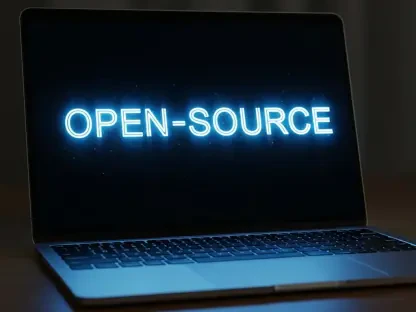In the ever-evolving landscape of cloud security, where misconfigurations account for a staggering number of breaches, the choice between automated and manual testing has become a pivotal decision for organizations safeguarding their digital assets on platforms like AWS, Azure, and Google Cloud Platform. Imagine a major enterprise facing a critical vulnerability in its multi-cloud setup, undetected due to an inadequate testing strategy, leading to a costly data leak. This scenario underscores the urgency of selecting the right testing approach to ensure robust protection against sophisticated cyber threats. As businesses increasingly rely on cloud environments, understanding how automated and manual testing methodologies stack up in penetration testing is essential. This comparison delves into the strengths and limitations of each method within the context of cloud security, providing clarity on their roles in identifying vulnerabilities and securing complex infrastructures.
Understanding Automated and Manual Testing in Cloud Security
Automated testing in cloud penetration involves the use of specialized tools and scripts to simulate attacks, identify misconfigurations, and uncover vulnerabilities in cloud environments with speed and precision. These tools can scan thousands of assets across multi-cloud setups, targeting issues like insecure APIs or overly permissive IAM policies. Often integrated into platforms offered by companies like Pentera Cloud and Astra Security, automation is designed to handle repetitive tasks and continuous validation, ensuring dynamic cloud configurations remain secure.
Manual testing, on the other hand, relies on human expertise to assess cloud systems, often focusing on intricate attack vectors that automated tools might overlook. Experts from firms like Bishop Fox and TrustedSec manually simulate real-world attacks, providing deep insights into complex vulnerabilities and subjective elements such as user experience. This hands-on approach is critical for tailored assessments where context and creativity play a significant role in uncovering hidden flaws.
The relevance of both methods in cloud penetration testing cannot be overstated, especially in modern software development frameworks like agile and DevOps, where rapid deployment cycles demand efficient yet thorough security checks. Across industries such as finance, healthcare, and government, where compliance with standards like FedRAMP and PCI is mandatory, automated testing ensures scalability, while manual testing offers the depth needed for regulatory alignment. Balancing these approaches addresses diverse testing needs, from ongoing monitoring to in-depth risk analysis, setting the stage for a detailed comparison of their application in securing cloud infrastructures.
Key Differences in Performance and Application
Speed and Efficiency
Automated testing stands out for its remarkable speed in cloud penetration testing, executing thousands of test cases across vast cloud environments in mere minutes. Tools leveraged by companies like Synack and NetSPI can perform continuous scans, making them ideal for regression testing and dynamic setups where configurations change frequently. This efficiency is crucial for large enterprises managing multi-cloud systems that require rapid validation to keep pace with deployment cycles.
In contrast, manual testing is notably slower due to the human element involved, often taking hours or days to cover the same scope that automation handles swiftly. Testers from firms like Rhino Security Labs meticulously analyze specific attack paths, which, while thorough, cannot match the velocity of automated scans. However, this deliberate pace allows for real-time observation, enabling the detection of nuanced issues that might escape scripted tools.
The disparity in speed highlights a trade-off: automation excels in repetitive, high-volume tasks essential for ongoing security in cloud setups, whereas manual testing sacrifices efficiency for detailed scrutiny. This balance becomes particularly evident in scenarios requiring frequent updates, where automation saves significant time, versus one-off assessments where manual depth is more practical.
Accuracy and Reliability
When it comes to accuracy, automated testing offers a clear advantage in minimizing human error during repetitive cloud security assessments. Platforms used by providers like Pentera Cloud consistently deliver identical results for the same inputs, ensuring reliability in detecting syntax errors or misconfigurations across AWS, Azure, and GCP. This precision is vital for maintaining a stable security baseline in large-scale environments.
Manual testing, however, can be susceptible to oversight due to tester fatigue or varying levels of experience, potentially missing subtle issues like intricate UI flaws in cloud dashboards. While firms like TrustedSec employ highly skilled experts to reduce such risks, the subjective nature of human judgment can lead to inconsistent outcomes. For instance, a manual tester might overlook a minor IAM policy flaw that an automated script would flag instantly.
Despite these challenges, manual testing often excels in identifying complex vulnerabilities that require contextual understanding, an area where automation may fall short. The reliability of automated tools in standardized scans complements the nuanced accuracy of manual efforts, creating a synergy that enhances overall cloud security when both are strategically applied.
Cost and Resource Requirements
The financial aspect of automated testing in cloud penetration often involves a significant upfront investment in tool licensing, script development, and platform integration, as seen with solutions from NetSPI and Cobalt.io. Additionally, it demands technical expertise for setup and maintenance, which can be a barrier for smaller organizations. However, over time, automation reduces costs by minimizing the need for extensive human resources, especially in repeated testing cycles.
Manual testing, conversely, typically incurs lower initial costs since it relies on readily available testers without the need for complex tools, a model favored by companies like Bishop Fox for bespoke engagements. Yet, the ongoing labor expenses can escalate for large projects or continuous testing needs, making it less scalable. This approach is often more cost-effective for one-off or exploratory assessments where deep customization is required.
Long-term, the cost dynamics shift: automation proves economical for enterprises with frequent testing demands across sprawling cloud infrastructures, while manual testing remains viable for smaller, less repetitive projects. The resource allocation also differs, with automation needing skilled programmers for upkeep and manual testing requiring detailed documentation to ensure consistency across assessments.
Challenges and Limitations of Each Approach
Automated testing in cloud penetration, despite its efficiency, faces hurdles such as high initial costs and the ongoing maintenance of scripts to adapt to evolving cloud services. Tools can struggle with subjective elements like user experience in cloud interfaces, often failing to detect issues that require human intuition. Furthermore, automated scans may become obsolete with frequent UI or configuration changes in platforms like AWS, necessitating constant updates to remain effective.
Manual testing grapples with its own set of challenges, primarily scalability, as human testers cannot match the volume handled by automated systems, especially in multi-cloud environments. The risk of human error looms large, particularly under tight deadlines, and the time-intensive nature of detailed assessments can delay critical security updates. Additionally, achieving consistent results across different teams or testers poses a persistent issue for firms relying on manual methods.
Technical and practical considerations further complicate the landscape: automation demands a steep learning curve for staff to manage sophisticated platforms, while manual testing requires meticulous documentation to track findings and ensure repeatability. Over-reliance on automation might miss critical, non-standard vulnerabilities, whereas manual approaches can falter in meeting the pace of modern cloud deployments, highlighting the need for a balanced strategy to address these inherent limitations.
Choosing the Right Approach: Recommendations and Final Thoughts
Summarizing the comparison, automated testing in cloud penetration outshines manual testing in speed and scalability, effortlessly handling repetitive tasks and continuous monitoring across vast infrastructures. Manual testing, however, offers unmatched depth and creativity, crucial for uncovering complex vulnerabilities and ensuring compliance in regulated sectors. Cost-wise, automation proves economical over extended periods, while manual efforts suit shorter, customized projects with tighter budgets.
For optimal outcomes, a hybrid approach emerges as the most effective strategy, blending automation for regression, performance, and load testing with manual expertise for usability and exploratory assessments in cloud environments. Automation should be prioritized for ongoing validation in dynamic setups, as seen with platforms from Synack and Astra Security, while manual testing, exemplified by Bishop Fox’s tailored evaluations, is indispensable for deep, context-driven analysis. This combination leverages the strengths of both to fortify security comprehensively.
Looking back, the journey through this comparison reveals that aligning the testing choice with organizational goals, budget constraints, and team capabilities is paramount. Moving forward, organizations should invest in training to bridge skill gaps for automated tools and foster collaboration between automated platforms and human experts. Embracing emerging trends like Penetration Testing as a Service (PTaaS) and staying adaptable to new cloud security challenges will ensure sustained protection. By strategically integrating both methodologies, businesses can build a resilient defense against evolving threats in their cloud infrastructures.









